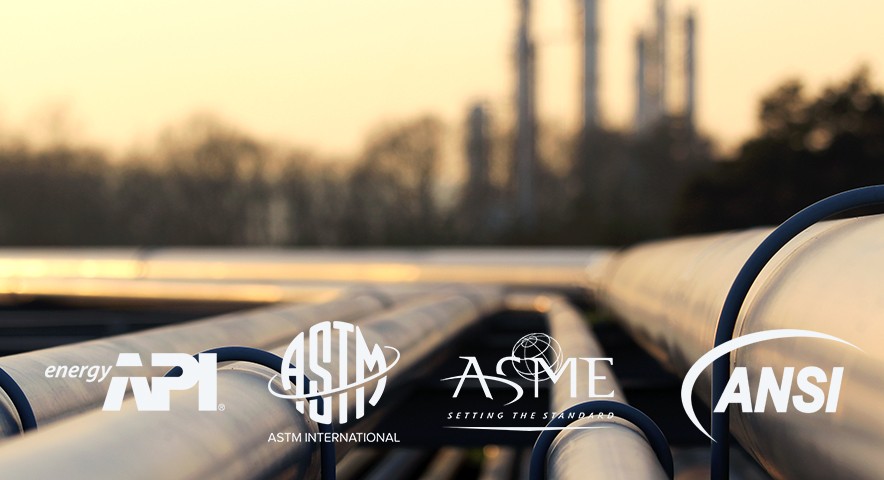When it comes to standardization, two prominent organizations that play vital roles in ensuring product quality, safety, and compatibility are the American Society for Testing and Materials (ASTM) and the American National Standards Institute (ANSI). While they both contribute to setting industry standards, their focus, processes, and scope differ significantly.
In this article, we’ll break down the key differences between ASTM and ANSI, their roles in the standardization process, and how they impact various industries.
What Is ASTM?
ASTM International (formerly known as the American Society for Testing and Materials) is a globally recognized organization that develops technical standards for a wide range of materials, products, systems, and services. These standards are used to improve product quality, enhance safety, and facilitate international trade.
Primary Focus of ASTM:
- Developing and publishing voluntary consensus standards
- Focus on material properties, testing methods, and product specifications
- Standards apply to industries such as construction, petroleum, chemicals, metals, and consumer products
Examples of ASTM Standards:
- ASTM A106: Specification for seamless carbon steel pipes
- ASTM D3350: Standard for polyethylene plastic pipes
- ASTM C150: Specification for Portland cement
What Is ANSI?
The American National Standards Institute (ANSI) is a non-profit organization that oversees and accredits standards developed by other organizations. ANSI does not create standards but ensures that the standards development process is consistent, transparent, and fair. ANSI plays a crucial role in promoting U.S. standards globally and aligning them with international standards.
Primary Focus of ANSI:
- Accrediting and approving standards from other organizations
- Coordinating U.S. standards with ISO (International Organization for Standardization) and IEC (International Electrotechnical Commission)
- Ensuring that standards meet consensus-based requirements
Examples of ANSI Standards:
- ANSI Z87.1: Standard for protective eyewear
- ANSI B16.5: Standard for pipe flanges and flanged fittings
- ANSI C12.1: Standard for electric metering
Key Differences Between ASTM and ANSI
| Aspect | ASTM | ANSI |
|---|---|---|
| Full Name | American Society for Testing and Materials | American National Standards Institute |
| Function | Develops and publishes standards | Accredits and approves standards developed by other organizations |
| Primary Focus | Material properties, testing methods, and product specifications | Ensures consistency and fairness in the standardization process |
| Standards Creation | Develops its own standards | Does not create standards, only approves them |
| Industry Scope | Wide range of industries, including construction, petroleum, and manufacturing | All industries, focusing on harmonizing U.S. standards with global standards |
| Global Presence | Recognized internationally for technical standards | Primarily U.S.-focused but aligns with global standards like ISO and IEC |
How ASTM and ANSI Standards Work Together
In many cases, ASTM and ANSI standards complement each other. For example:
- ASTM develops the technical specifications for a product, such as the material composition and performance requirements.
- ANSI ensures that the standard development process meets international guidelines, facilitating its recognition and acceptance.
Example: Pipe Flanges
- ASTM A105 specifies the chemical composition and mechanical properties of carbon steel used for flanges.
- ANSI B16.5 covers the dimensional requirements and pressure ratings for pipe flanges.
By combining ASTM material standards with ANSI-approved guidelines, manufacturers can ensure both product quality and compatibility with global systems.
Why Understanding ASTM and ANSI Is Important
For businesses, understanding the distinction between ASTM and ANSI is crucial for ensuring compliance and improving product performance. Here’s why:
- Compliance with Industry Standards: Avoid costly mistakes and legal issues by meeting the appropriate standards.
- Enhanced Product Quality: ASTM standards ensure product reliability and durability.
- Market Access: ANSI accreditation facilitates international trade by aligning U.S. standards with global requirements.
- Consumer Safety: Standards help protect end-users by promoting safe and reliable products.
Conclusion
Both ASTM and ANSI are essential to the standardization landscape, but they serve distinct roles. ASTM focuses on creating detailed technical standards for materials and products, while ANSI ensures that the process of standardization is consistent and in line with international guidelines.
When developing or sourcing products, it’s crucial to identify which standards apply—whether it’s an ASTM specification for material properties or an ANSI-accredited guideline for product safety and compatibility. By understanding the differences and how these standards work together, businesses can ensure compliance, quality, and global competitiveness.
